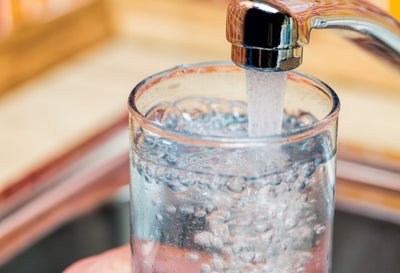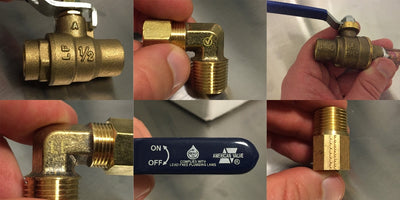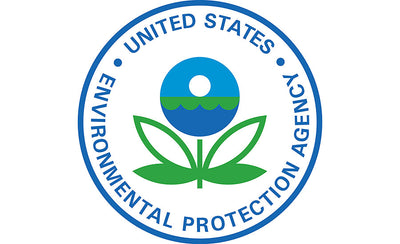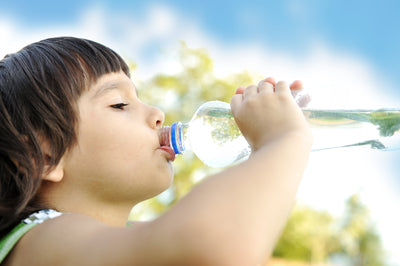Paula R. Buchanan | Graduate Intern Nerd
As a water nerd who also has education and experience in healthcare , I am especially concerned with how the human impact on the natural water cycle can negatively impact population and public health. This report focuses on how the “small” disasters such as temporary water outages in hospitals and other healthcare facilities can also negatively impact water availability and access in our individual households.
What Are the Federal Procedures that Municipalities Must Follow?
Community and private water systems are vulnerable to a number of different threats. Such susceptibilities include natural disasters, crumbling infrastructure and bioterrorism - the scale of which may be extrapolated depending on how many individuals are reliant on a single water distribution system. Federal, state, and local utility-level legislation govern what to do when temporary water outages occur. At the federal level, the Safe Drinking Water Act was amended in 2002 to include the Bioterrorism Act to address emergency water supplies for public water systems under 42 U.S.C. 300i-4 (b), including having a backup water supply plan in case primary water supplies are contaminated. But this legislation only includes information dissemination to water systems, not the individuals whose residences are negatively impacted by temporary water outages.
State and Local Procedures that Protect Drinking Water
Under 42 U.S.C. 300g–2, states are required to create their own emergency drinking water plans, especially for smaller municipalities. For larger municipalities, it is common for the federal government to take a more active role. Water systems in local municipalities that have more than 3,300 residents must follow 42 U.S.C. 300i-2, which requires them to have an emergency water supply plan, but does not include specific information on how to communicate with the public. Unfortunately, how each level of government actually communicates with the public about the water outage can differ, which can be confusing. This makes it even more important for individuals and their households to be prepared for temporary water outages, by arming themselves with the most accurate information on what to do when these emergencies occur.
How Healthcare Facilities Respond to Temporary Water Outages:
We are too familiar with the gut-wrenching images and videos of patients and their caregivers being trapped in downtown New Orleans hospitals during the aftermath of Hurricane Katrina in 2005. Power and water outages made it close to impossible to take care of patients. What we are less familiar with are the temporary water outages that happen more often, but still negatively impact patient care and healthcare facilities’ ability to function.
Fortunately, The Joint Commission, a nonprofit organization that functions as the only accreditation entity for most healthcare facilities in our country and around the world, mandates that all healthcare facilities have and follow an Emergency Water Supply Plan (EWSP). In partnership with the Centers for Medicare and Medicaid Services, The Joint Commission mandates Standard EM.02.02.09 of all healthcare facilities’ Emergency Operations Plan (EOP), which requires hospitals to identify alternative water sources needed to conduct essential consumption and care activities for both patients and equipment to ensure that the facility continues to be a sanitary environment for medical treatment. EWSPs are also required as a component of healthcare facilities’ Joint Commission accreditation.
Even if you think your household is prepared for temporary water outages, you should also take into consideration how area hospitals, clinics, and other healthcare facilities impact the availability of and access to drinking water. This is especially relevant because – unlike when larger water outages occur – you might not know that the smaller water outages are occurring until it is too late. Information, and information-sharing, is power. Use that power to ensure that you, your household, and your community are prepared for the “smaller” types of disasters that can negatively impact our lives.
How Can Water Outages at Healthcare Facilities Affect Your Household Water Supply?
While The Joint Commission ensures that healthcare facilities must identify alternative water supplies to maintain the “sanitary integrity” of medical treatment facilities, there is no mandate from water supply entities to ensure that increased use of water resources won’t surpass their area’s water systems capacity. This could result in enough water for healthcare facilities, but not enough water for individual households and neighborhoods.
Temporary water outage events can take a healthcare facility by surprise, disrupting daily operations. These disruptions create a ripple effect that also negatively impact water supplies in individual households. If, for example, your house is located near a hospital and both the hospital and residential households are on the sample water supply infrastructure, your house could also be negatively impacted by temporary water outages. Unfortunately, this “small” water outages are less likely to be publicized, since they are less likely to garner media attention and interest.
What Can You Do To Be Better Prepared?
Fortunately, there are online resources produced by government entities that can help individual households be better prepared for inevitable temporary water outages. U.S. Department of Health and Human Services Public Health Emergency (PHE) website provides “Planning for Water Supply Interruptions: A Guide for Hospitals and Healthcare Facilities” to help healthcare facilities to plan for water supply interruptions. This guide also includes helpful resources for individual homes and households, including a checklist of what questions to ask that can better prepare you for temporary water outages.
It is also beneficial for households to have individual emergency water supplies. You should also know where your area fire department, community center, and other public facilities are located, since they are often used to disperse emergency water supplies.
The Takeaway: Water Systems Can, and Do, Fail. Be Prepared for Them.
Even if you think your household is prepared for temporary water outages, you should also take into consideration how area hospitals, clinics, and other healthcare facilities impact the availability of and access to drinking water. This is especially relevant because – unlike when larger water outages occur – you might not know that the smaller water outages are occurring until it is too late.
Helpful Resources: Center for Disease Control and Prevention’s Emergency Water Supply Planning Guide for Hospitals Environmental Protection Agency (EPA’s) Planning for an Emergency Drinking Water Supply















